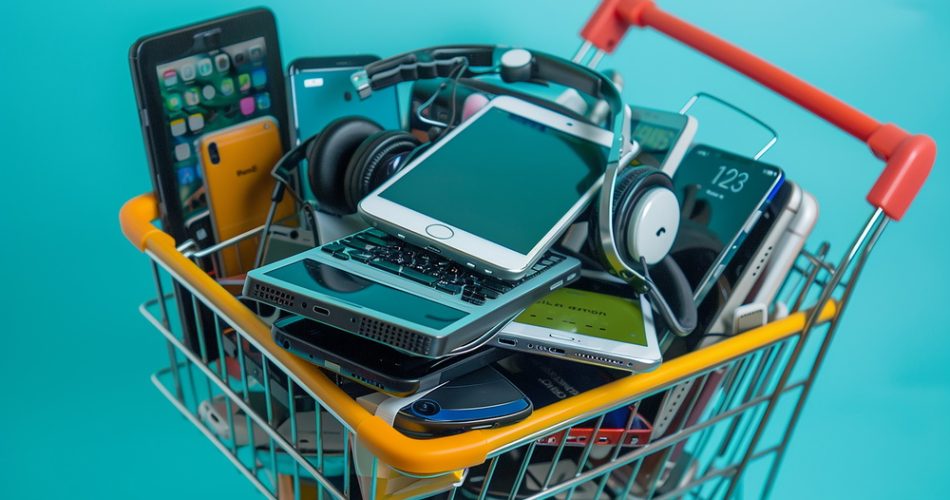Each year, consumers worldwide spend head-spinning amounts on consumer electronics, pouring hundreds of billions of dollars into new TVs, smartphones, PCs, tablets, and gaming gear.
Even more worrying is the growing willingness of the tech-savvy population to dig even deeper into their pockets for the latest gadgets, pushing five-year spending figures to record highs.
According to data presented by Jemlit.com, the world has spent an eye-watering $5.8 trillion on consumer electronics since 2020, enough to buy the entire Bitcoin supply twice.
More Than Half of All Spending ($2.9 Trillion) Went to Smartphones
The consumer electronics industry has been hit hard twice in the past three years, as consumers tightened their budgets amid rising costs and inflation. The gigantic $44 billion revenue drop in 2022, following the market’s peak in 2021, was the worst downturn the consumer electronics segment has ever seen. Then, just two years later, another hit, with sales plunging by $5 billion in 2024. But despite these dramatic market swings, the industry always bounces back, driven by consumers’ willingness to dig even deeper into their pockets for the latest-gen devices.
In 2025, global consumer electronics spending is expected to hit a new milestone, with people spending more than $1 trillion for the first time. To put that into perspective, this figure is nearly equal to the entire GDP of countries like the Netherlands, Turkey, and Saudi Arabia. Even more striking, this surge will push five-year spending totals to shocking highs.
According to a Jemlit analysis based on Statista data, the world has spent a shocking $5.8 trillion on consumer electronics since 2020. This figure becomes even more striking when compared to some of the world’s most valuable assets.
For instance, that $5.8 trillion is enough to buy the entire Bitcoin supply twice, worth around $2.3 trillion as of last week. Also, if five-year consumer electronics spending were a country, it would rank as the world’s third-largest economy, behind the United States and China. And here’s another shocking comparison: that $5.8 trillion could buy Meta and still leave enough to acquire Tesla and Netflix, too.
As expected, smartphones had the lion’s share in global consumer spending over the past five years, accounting for $2.9 trillion, or half of the total. PCs, laptops, and tablets came next with $1.34 trillion, followed closely by TVs, radios, and multimedia devices at $1.29 trillion. Gaming equipment had a much smaller five-year bill, costing the world “only” $185 billion, while another $22 billion was spent on drones.
$5.8 Trillion Already Spent, and Another $5.4 Trillion Coming by 2030
While many may be stunned by the $5.8 trillion spent on new devices over the past five years, the following years are set to nearly match that figure, with another $5.4 trillion coming to the market by 2030.
According to Statista estimates, after spending a record $1 trillion on consumer electronics in 2025, people will continue to add around $30 billion to this annual bill before eventually spending a jaw-dropping $1.15 trillion on new devices in 2030.
In comparison, that is 15% more than the projected total for this year and 25% more compared to annual spending just five years ago.

